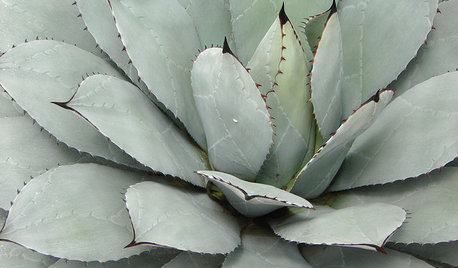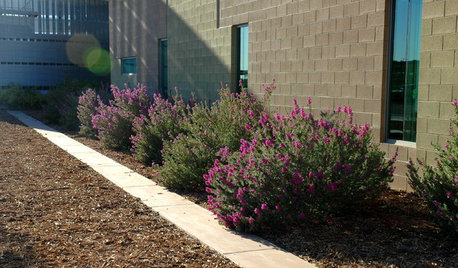Leyland Cypress in the Arizona desert watering
walt55
14 years ago
Related Stories

BLUE AND GRAY FOLIAGEGreat Design Plant: Parry's Agave
Don't let the spikes scare you away — this succulent is surprisingly friendly to gardeners whose landscapes lie beyond the desert
Full Story
LANDSCAPE DESIGNDitch the Ordinary Ditch: Create a Realistic Dry Creek Bed
Here’s how to turn your water runoff system into an eye-catching accent for your landscape
Full Story
SAVING WATERHouzz Call: Are You Letting Go of Your Lawn?
Many facing a drought are swapping turf for less thirsty plantings. If you’re one of them, we’d like to hear about it
Full Story
SOUTHWEST GARDENINGSouthwest Gardener's December Checklist
Make your garden a personal winter resort with lights, well-designed containers and plantings that please the eye
Full Story0

GARDENING GUIDESBackyard Birds: Invite Entertaining Hummingbirds Into Your Garden
Hummingbirds — unique to the Americas — zip through open landscapes seasonally or year-round. Here’s how to attract them
Full Story
GARDENING GUIDESHow to Avoid Overcrowded, Overpruned Shrubs
Go for a more natural look that’s easier and less expensive to maintain by giving your plants the right amount of growing room
Full Story
GARDENING GUIDESWhen and How to Plant a Tree, and Why You Should
Trees add beauty while benefiting the environment. Learn the right way to plant one
Full Story
DREAM SPACESWorld of Design: 15 Swimming Pools With Dream Views
Join us on a refreshing tour of spectacular swimming pools from Sydney to Moscow
Full Story
HOLIDAYSHouzz Call: Show Us Your Christmas Tree!
How lovely are your branches? Post a picture and share your stories
Full Story
GARDENING GUIDESGrow Your Own Privacy: How to Screen With Plants and Trees
Use living walls to lower your home and garden's exposure while boosting natural beauty in your landscape
Full Story








gardener365
pineresin
Related Professionals
Bridgetown Landscape Architects & Landscape Designers · Prairie Ridge Landscape Architects & Landscape Designers · Signal Hill Landscape Architects & Landscape Designers · Wareham Landscape Architects & Landscape Designers · Paradise Landscape Architects & Landscape Designers · Elmhurst Landscape Contractors · Nanuet Landscape Contractors · Oklahoma City Landscape Contractors · Quincy Landscape Contractors · Rancho Santa Margarita Landscape Contractors · Santa Ana Landscape Contractors · The Villages Landscape Contractors · West Chicago Landscape Contractors · Crowley Landscape Contractors · Norridge Landscape Contractorstaksodij
gardener365
ken_adrian Adrian MI cold Z5
scotjute Z8
flattie
ospreynn
gardengal48 (PNW Z8/9)
walt55Original Author
tugbrethil